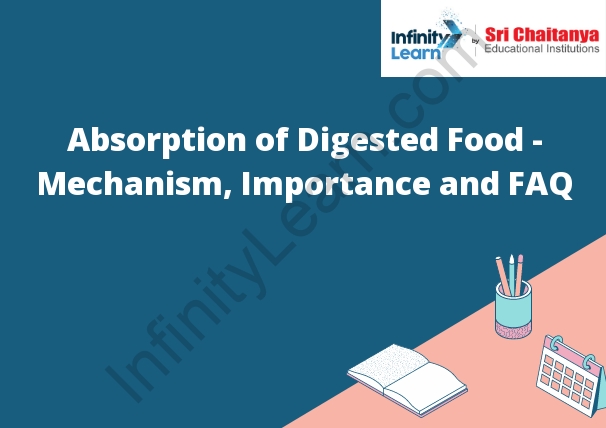Table of Contents
Introduction of Absorption of Digested Food
Digestion is the process of breaking down food into small molecules that can be absorbed and used by the body. The small intestine is the part of the digestive system where most of the absorption of digested food takes place. The small intestine is lined with tiny, finger-like projections called villi, which increase the surface area available for absorption. The small intestine also contains numerous tiny blood vessels that absorb the digested food. Absorption of Digested Food – Mechanism Importance and FAQ.

Simple Diffusion
In simple diffusion, the concentration of a molecule is evenly distributed throughout a given space. This occurs as a result of the random movement of molecules. There is no directional force involved in the process.
Active Transport
Active transport is the movement of molecules across a cell membrane against their concentration gradient. This requires the use of energy, usually in the form of ATP. Active transport can be used to move molecules into or out of a cell, depending on the concentration gradient.
Facilitated Transport
Facilitated transport is the process by which molecules cross a cell membrane by using a protein channel or pore. The protein channel or pore is called a transporter. The transporter is specific for the type of molecule it transports. For example, a transporter for glucose would only transport glucose molecules across the cell membrane.
Passive Transport
Passive transport is the movement of molecules across a cell membrane without the use of energy. This type of transport is often used to move small molecules or ions across the membrane. There are several different types of passive transport, including diffusion, osmosis, and facilitated diffusion.
Absorption in Digestion
The process of digestion begins with the physical breakdown of food into smaller pieces. This is done through chewing and the mechanical action of the stomach and intestines. Digestion then begins as the food is mixed with digestive juices that are secreted by the stomach and intestines. The digestive juices contain enzymes that break down the food into smaller molecules that can be absorbed into the bloodstream. The food then passes through the intestinal wall into the bloodstream and is transported to all parts of the body.
Mechanism of Absorption
The mechanism of absorption is the process by which substances such as nutrients, ions and water cross the cell membrane and enter the cell. This can be achieved through passive or active transport. Passive transport is the process where substances move across the cell membrane due to the concentration gradient, while active transport is the process where substances are moved across the cell membrane against the concentration gradient with the use of energy.
The Following Points Help Illustrate the Importance of Absorption:
1. Absorption is the process of taking in nutrients from food.
2. Absorption is important for supplying the body with the nutrients it needs to function properly.
3. Absorption is necessary for the body to build muscle, repair tissue, and produce energy.
4. Absorption is also important for removing toxins from the body.
Absorption of Digested Food – Mechanism Importance and FAQ.









